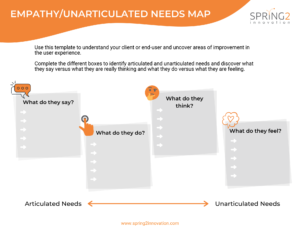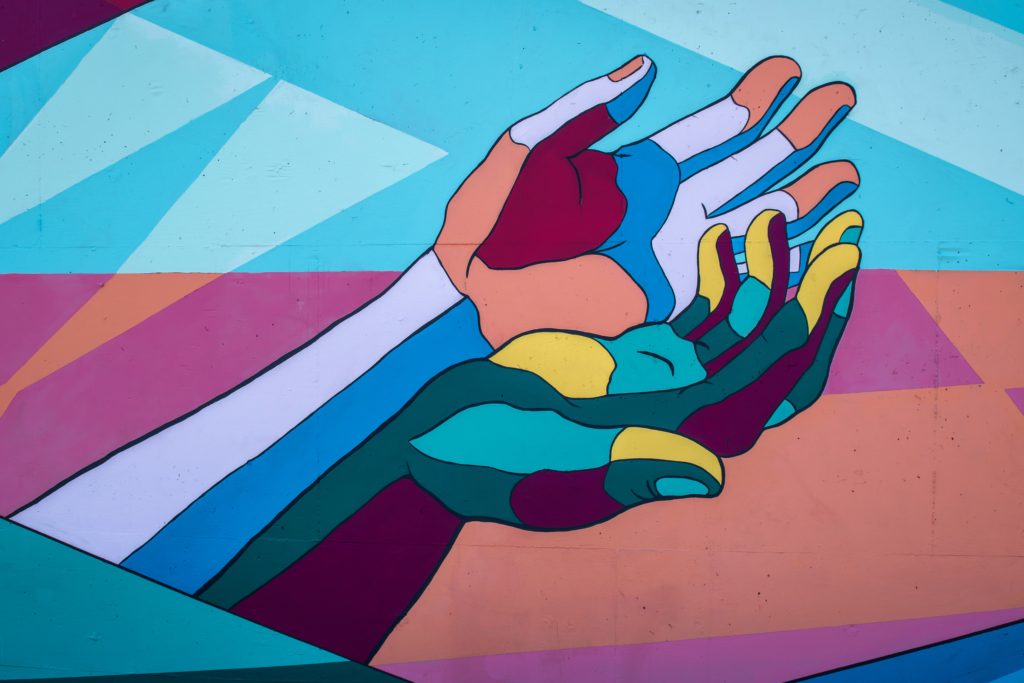Empathizing with users is the first and foundational step in the design thinking methodology. Empathy refers to the ability to share, understand, and acknowledge the feelings of others. All humans innately have the capacity for empathy within us. In the design thinking process, the empathize phase involves acquiring a deep understanding of users – the people who will be using your product or service. Let’s look at a few simple guidelines and tools to make it easy for you to start your design thinking journey.
To create products or services that are both intuitive and sustainable in the long-term, designers must gain a strong understanding of their users. Since it isn’t possible to empathize with every single individual using your product or service, designers produce personas, fictional characters that represent a core user group that represents many similar users in the context of engaging with the service. A persona lists key features about the specific fictitious user, including demographics, environmental, motivations, and behaviour. To create a persona, use existing data and research if it is available in your organization to create a baseline idea of users and identify any remaining questions that need to be answered. We also recommend observing and immersing oneself in the user’s environment, as well as carry out user interviews to gain a clearer picture of users.
Empathizing requires excellent listening skills to deeply understand what your users feel while using your product or service. Designers produce empathy maps in relation to personas to uncover what their users are saying and the things they are not saying, including what users are thinking, feeling, or even hearing. Which actions or words do they use to indicate these feelings? A thorough empathy map is a helpful tool to refer back to during the design process to consider how the product or service can better address physical and emotional needs of your persona.

If you are looking to create a new service, or are working through a service re-design, you might also consider using a third tool, journey maps, during the empathize phase. Journey maps help visualize a user’s complete interaction within an existing service. They document each step the user takes chronologically and pinpoint what aspects of the service are working or cause frustration.
Don’t be afraid to talk to your users if you are unsure about aspects of the personas, empathy maps, or journey maps. We encourage you to co-create these artifacts with users, as they will validate or challenge any assumptions you have made during the research. If you have the opportunity to engage with them directly, ask for their opinion. Most people like to have their voices heard. Users often know what they like and don’t like while using a product or service and give precious insight into areas where you can improve or innovate.
The empathize phase is all about letting go of any assumptions you may have about your users. You may be able to guess what they like, try to re-create successful trends, or re-purpose what is popular. Still, by referring to your personas, empathy maps, and journey maps during the design thinking process, you can feel confident that you are designing an innovative product or service that will address your user’s true needs as well as strengthen your organization. What steps are you going to try and take to understand your end users better?
For more, check out our video empathizing here:
As part of Spring2 Innovation’s Design Thinking Certificate, we teach you how to master all five phases of the design thinking methodology, starting with the empathize phase. We teach learners how to create effective personas and conduct other types of user research before beginning a new design (or re-design) of a product or service that involves end-users.
Master all five phases of Design Thinking: Click here for more information about our Design Thinking Certification program

